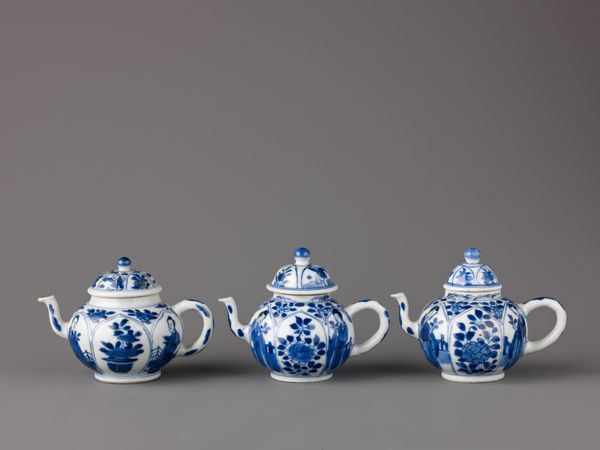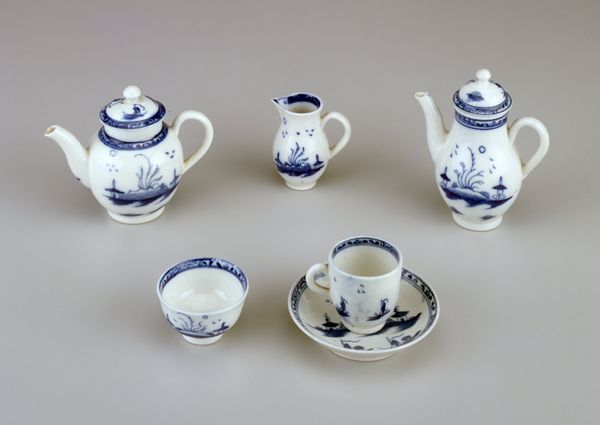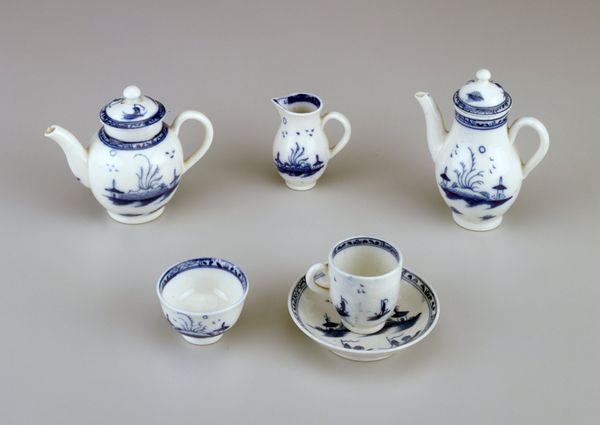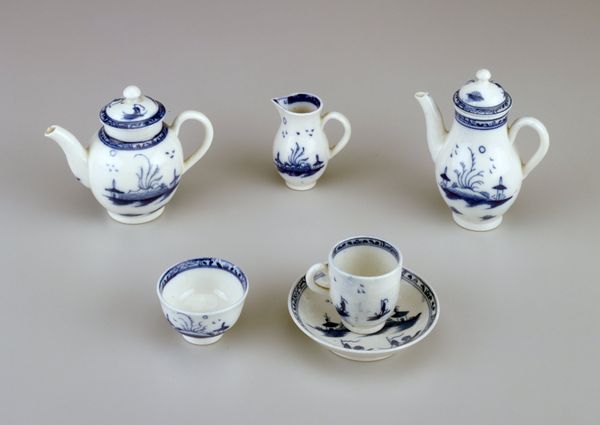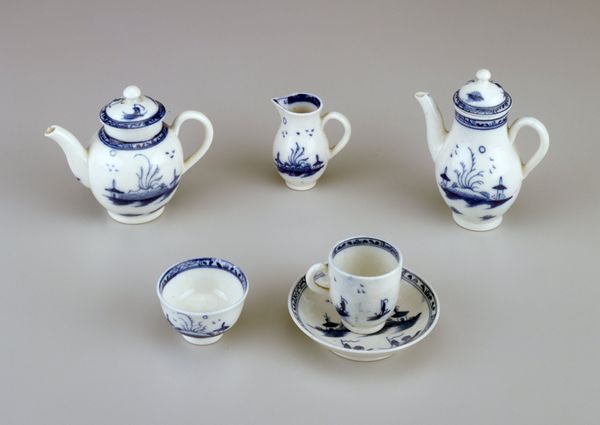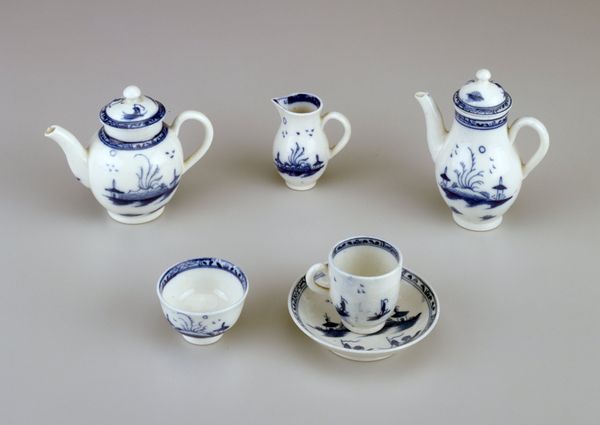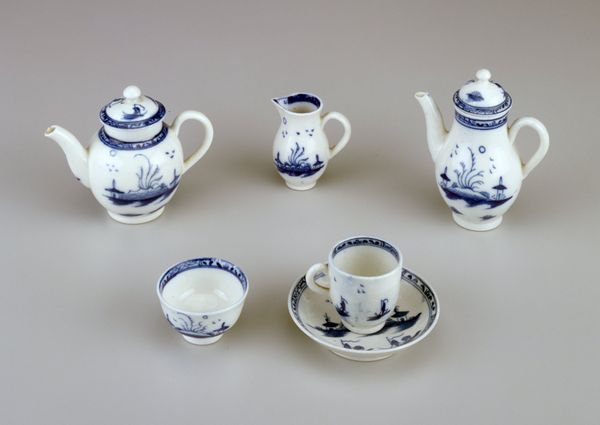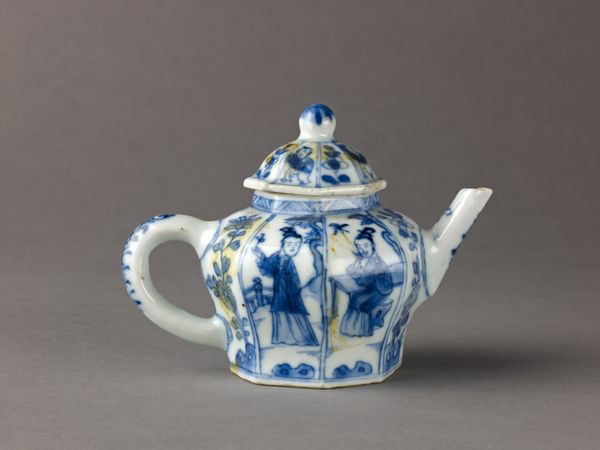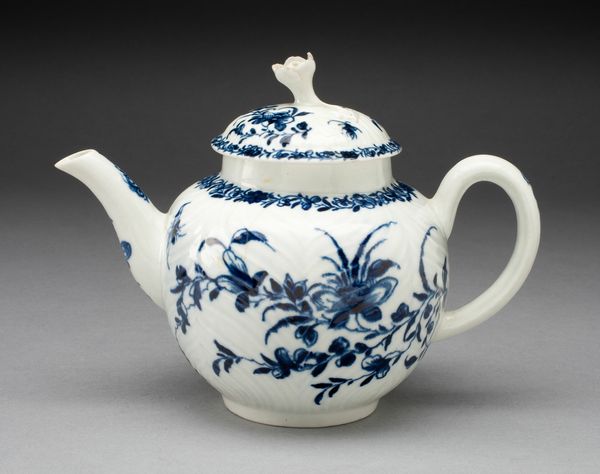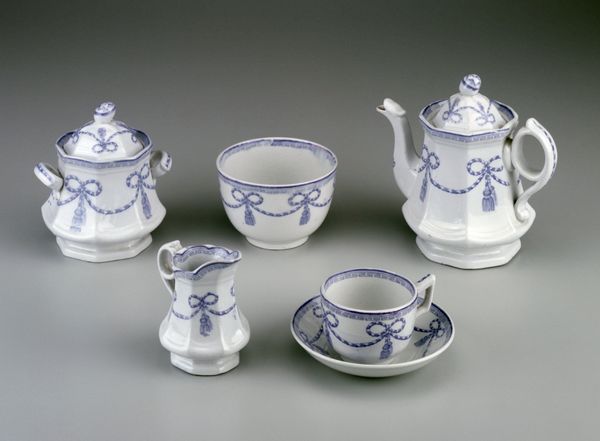
porcelain
#
porcelain
#
culinary art
#
decorative-art
Dimensions: Coffee pot: h. 8 3/4 in. with cover;Teapot: h. 6 1/4 in. with cover; Sugar bowl: 4 1/2 in. with cover; Teacup: 1 3/4 in. × 2 7/8 in.; Saucer: diam. 4 3/4 in.; Coffee cup: 2 1/4 × 2 5/8 in.; Saucer: 4 1/2 in.; Slop bowl: 2 13/16 × 5 7/8 in.
Copyright: Public Domain
Editor: Here we have a "Tea Set," crafted around 1760 by the Worcester Royal Porcelain Company, now residing here at The Art Institute of Chicago. The blue floral decoration on the stark white porcelain gives a delicate, refined impression. I wonder, what aspects stand out to you when you examine it? Curator: What intrigues me most is the production of this set itself. Think about the social context of porcelain in 1760. It was a luxury item, and the Worcester factory was actively engaged in making it accessible to a wider market through innovative production methods. What kind of labor do you think was involved? Editor: Oh, right, I hadn't considered that. Obviously skilled artisans creating the pieces, painting the designs... But I suppose more mundane tasks too, like mixing the porcelain, firing the kilns? Curator: Exactly. And think about the source of the materials – the kaolin clay, the cobalt for the blue decoration. Global trade networks were essential, and those networks had their own power dynamics and material costs. What do you make of the printed designs? Editor: You mean the blue flowers? Well, they’re pretty, but kind of repetitive, almost like a stamp. Is that something we should consider? Curator: Precisely! Transfer printing on porcelain was a relatively new technology at the time. It reduced the need for highly skilled painters on every piece, speeding up production. It was all about making luxury more readily available through modified means of production. Considering the scale of labor, materiality and technologies involved helps contextualize such items and blur traditional lines of separation between high art and craft. Editor: That’s fascinating! It's much more than just a pretty tea set, then. I guess understanding how things were made and who made them is crucial to interpreting its cultural significance. Curator: Exactly! Examining the social and material realities helps us see art objects as part of broader systems of production and consumption.
Comments
No comments
Be the first to comment and join the conversation on the ultimate creative platform.
